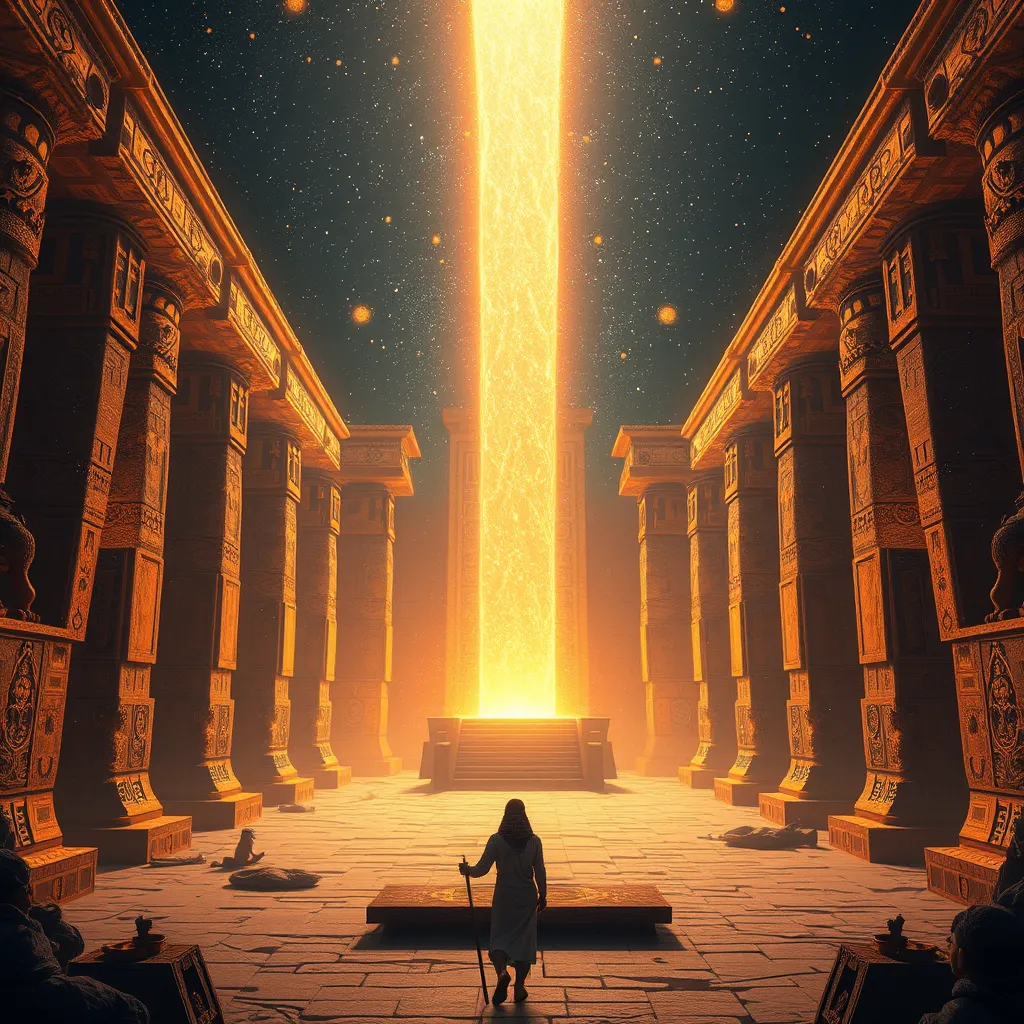The Duat: A Realm of Spiritual Exploration
I. Introduction to the Duat
The Duat, in ancient Egyptian mythology, is a complex and multifaceted realm that plays a pivotal role in the understanding of life after death. It is often defined as the underworld, a place where the souls of the deceased embark on a journey of spiritual exploration. The significance of the Duat is immense, as it represents both a physical and metaphysical landscape that the ancient Egyptians believed one must navigate to achieve immortality.
Within the context of the afterlife, the Duat serves as a transitional space where souls undergo trials and tribulations before reaching their final destination. This journey is not merely a passage but a profound exploration of one’s life, deeds, and ultimate fate.
II. Historical Context of the Duat
The concept of the Duat has its origins in the early dynastic period of ancient Egypt and has evolved over millennia. Initially, it was a vague notion of the afterlife, but it eventually became richly detailed in funerary texts and religious practices. The Duat is mentioned in several ancient texts, including the Pyramid Texts and the Coffin Texts, which outline the beliefs surrounding death and the afterlife.
Key inscriptions on tomb walls and papyri depict the Duat as a labyrinthine world filled with various trials. These texts describe how the Duat was viewed as a necessary journey for the soul, emphasizing its role in the ancient Egyptian belief system.
III. The Structure of the Duat
The Duat is characterized by a variety of regions and landscapes, each with its own significance and purpose. These include:
- Fields of Iaru: A paradise-like area where the righteous could enjoy eternal bliss.
- Lake of Fire: A terrifying region where the souls of the wicked faced punishment.
- Mountain of the West: A significant landmark representing the boundary between the living world and the Duat.
Among the most crucial landmarks within the Duat is the Hall of Ma’at. This hall serves as the site of the judgment of the deceased, where the heart of the soul is weighed against the feather of Ma’at, the goddess of truth and justice. The outcome of this judgment determines the soul’s fate, allowing access to the afterlife or condemning it to eternal suffering.
IV. Deities and Entities of the Duat
The Duat is populated by numerous gods and goddesses who play essential roles in the afterlife journey. Some of the most notable deities include:
- Osiris: The god of the afterlife, resurrection, and the ruler of the Duat.
- Isis: The goddess of magic and healing, often invoked for protection during the journey.
- Anubis: The jackal-headed god associated with mummification and the protection of graves.
In addition to these deities, various spiritual guides and protective entities assist souls as they navigate the Duat. These guides help the deceased overcome obstacles and challenges, ensuring a safe passage to the afterlife.
V. The Journey Through the Duat
The journey through the Duat is a complex process that begins immediately after death. Souls must navigate a series of gates and face numerous challenges, including encounters with monstrous creatures and tests of their moral character. The journey can be daunting, filled with trials that reflect the soul’s earthly actions.
One of the most important texts for navigating this journey is the Book of the Dead. This funerary text contains spells, incantations, and instructions designed to help the deceased overcome obstacles in the Duat. It serves as a guide, offering reassurance and wisdom for the soul’s journey.
VI. Symbolism and Themes in the Duat
The Duat is rich in symbolism, reflecting the ancient Egyptians’ beliefs about life, death, and rebirth. Key symbols associated with the Duat include:
- The Feather of Ma’at: Represents truth and justice, crucial for the judgment of the soul.
- The Ankh: Symbolizes life and immortality, emphasizing the hope for resurrection.
- Serpents: Often represent chaos and danger, embodying the challenges faced in the afterlife.
Themes of resurrection, transformation, and rebirth are prevalent throughout the narratives of the Duat. The journey is viewed as a transformative experience, where the soul sheds its earthly limitations and emerges renewed.
VII. The Duat in Modern Spiritual Practices
The influence of the Duat persists in contemporary spiritual beliefs and practices. Many modern spiritual seekers draw inspiration from ancient Egyptian concepts of the afterlife, integrating elements of the Duat into their own spiritual journeys. The emphasis on personal transformation and the exploration of the self resonates with various modern philosophies.
Moreover, comparisons can be drawn between the Duat and other cultural concepts of the afterlife, such as:
- The Greek Underworld: A realm where souls are judged and assigned to different areas based on their earthly deeds.
- The Christian Heaven and Hell: Concepts of eternal reward and punishment echo the duality of the Duat.
- The Buddhist cycle of Samsara: The ongoing cycle of life, death, and rebirth parallels the themes found within the Duat.
VIII. Conclusion
In summary, the Duat serves as a profound symbol of spiritual exploration in ancient Egyptian mythology. It encapsulates the complexities of the afterlife and the journey of the soul, emphasizing the importance of moral integrity and transformation. The Duat remains a relevant concept in understanding the human experience of death and the afterlife, inviting both reverence and reflection.
As we delve into the mysteries of the Duat, we gain insight into the ancient Egyptians’ views on existence, guiding us in our own spiritual explorations and understanding of life beyond death.





